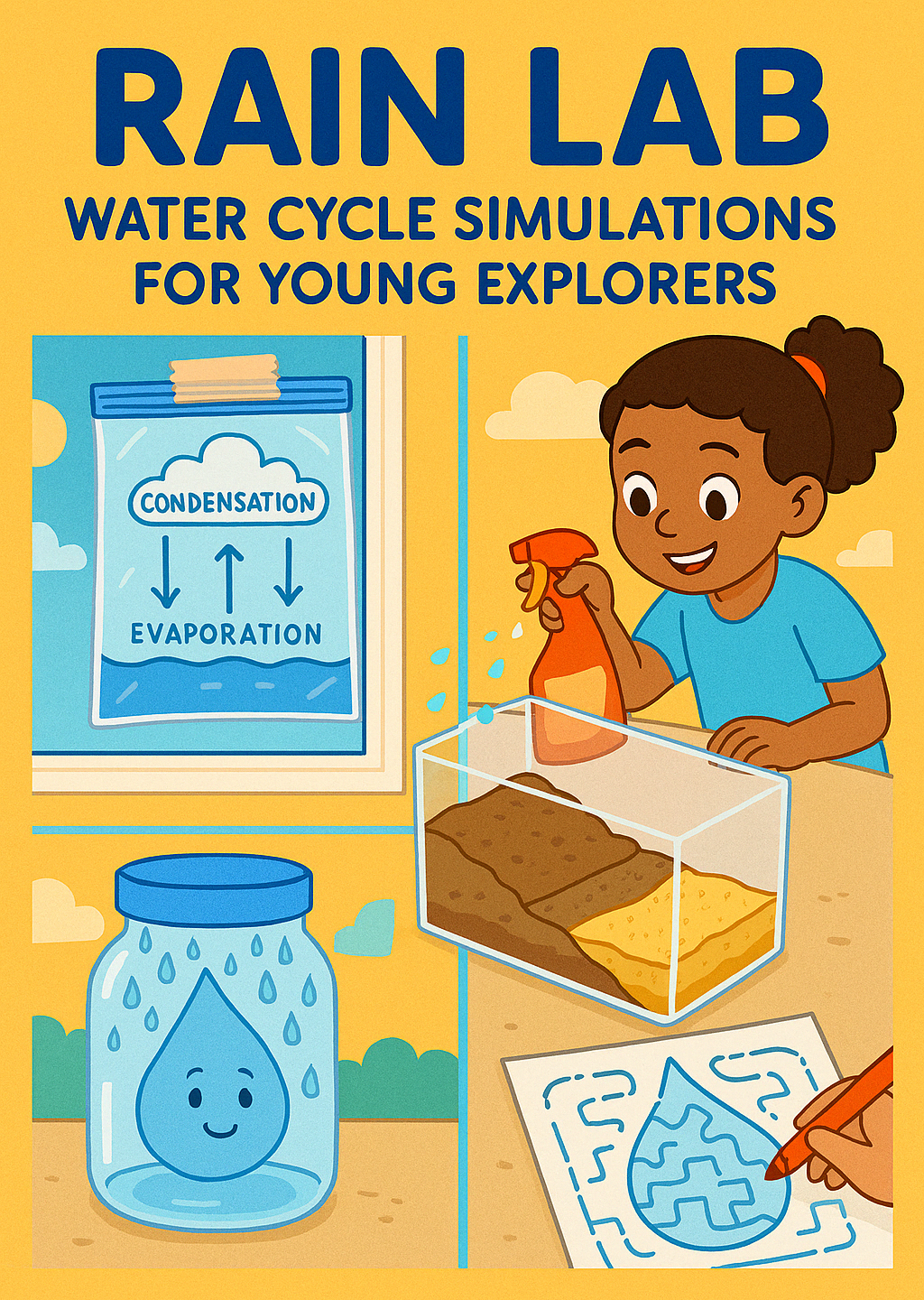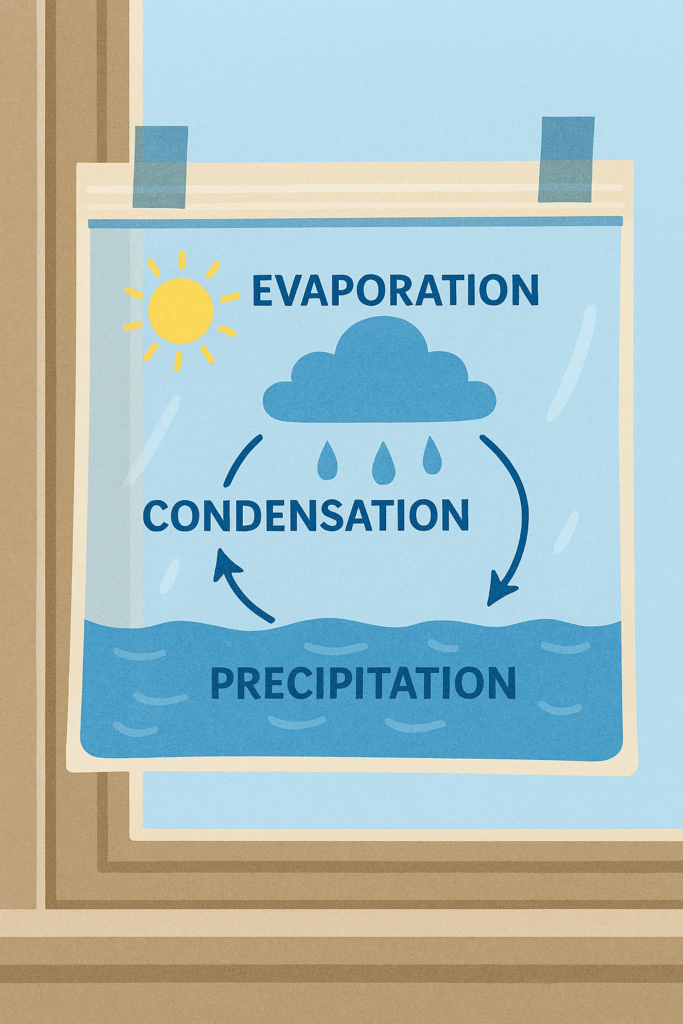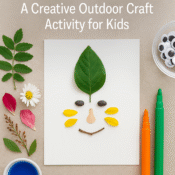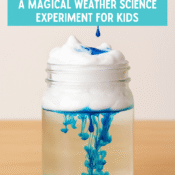
Rain Lab: Water Cycle Simulations for Young Explorers
Why the Water Cycle Matters
Rain is more than just weather—it’s an essential part of Earth’s natural systems. Helping children understand the water cycle builds their awareness of climate, ecosystems, and sustainability. Through simple experiments, we can make invisible concepts like evaporation, condensation, and precipitation come to life. In this third instalment of our “Nature Explorers” series, kids become rain scientists, learning with their hands and their curiosity.
The Invisible Journey of a Raindrop
The water cycle has four main stages: evaporation, condensation, precipitation, and collection. Water evaporates into vapour, forms clouds through condensation, falls back to earth as rain, and collects in rivers and oceans. These repeating processes power life on our planet.
Instead of textbook diagrams, these activities allow kids to simulate each stage and witness the cycle in action—on windows, in bags, or inside a sandbox.
Core Activities: Water in Motion
Let’s recreate the journey of water with two hands-on science explorations.
1. Ziplock Water Cycle in a Window
Objective: Visualise the complete water cycle in a sealed environment.
Materials:
- Ziplock bag (quart-size)
- Water
- Blue food colouring (optional)
- Permanent marker
- Tape
- Window with sunlight
Steps:
- Fill the bag with a small amount of water and a drop of food colouring.
- Use the marker to draw clouds, sun, and waves on the outside.
- Seal the bag and tape it to a sunny window.
- Observe the water droplets over hours and days.

What to Observe: Water will slowly evaporate and condense at the top of the bag. Eventually, it may form visible droplets that “rain” down.
2. Rainfall Erosion Sandbox Test
Objective: Understand how rain affects soil and landscapes through erosion.
Materials:
- Shallow tray or baking dish
- Sand or soil
- Small watering can or cup with holes
- Small blocks, pebbles, or toy trees (optional)
- Towel or plastic sheet for surface protection
Steps:
- Fill tray with soil and shape a mini landscape with hills and valleys.
- Gently pour water from a height using the can or cup.
- Observe the flow of water and where soil moves.

What to Observe: Water creates paths, displaces sand, and forms erosion patterns like in real riverbeds or construction sites.
Quick Swaps for Rainy or Busy Days
If time or supplies are limited, try these easy mini-experiments:
- Condensation Collection Jar: Fill a clear glass with ice and leave it outside or near a window. Watch water form on the outside from air moisture.
- Paper Raindrop Maze: Draw a maze on paper and guide a blue dot (raindrop) through evaporation, cloud formation, and rain back to a puddle.
Extend the Learning
Here are a few ways to connect the experiments to deeper learning:
- Track daily rainfall in a notebook and compare with forecasts.
- Read “Down Comes the Rain” by Franklyn M. Branley.
- Watch time-lapse videos of clouds forming or rivers after rainfall.
You can also encourage kids to build their own rain journals with drawings, stickers, and water-related facts.
Science in Every Drop
Water is everywhere, but its cycle is often overlooked. With these activities, kids experience the flow of nature in tangible ways—creating clouds in bags and reshaping miniature landscapes. Rain becomes not just something to run from, but something to study, predict, and appreciate.
This concludes our three-part Nature Explorers series. Stay curious, stay messy, and keep experimenting!




